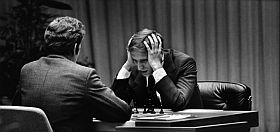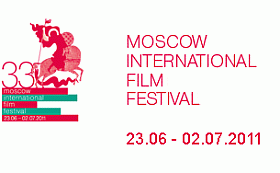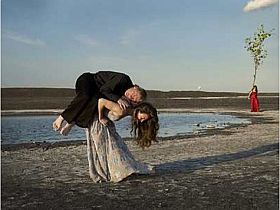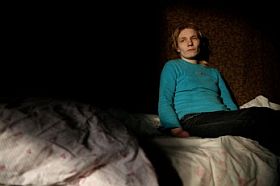


MIFF Documentary Competititon/ 2

In this text I can only speak for myself as one of three jurors at the first documentary competition at the 33st Moscow International Film festival stating that there was a clear agreement in the jury for the winner, Hell and Back Again, see below.
For the other 6 films it was obvious that ”Abendland” by Austrian Nikolaus Geyrhalter was visually a strong film essay with a very relevant critique of our civilisation with beautifully composed (but badly projected in the imax cinema) images of surveillance cameras, immigrant interviews, a refugee camp, Oktober fest in Munich… it is methaphoric, it has magnificent moments but it also suffers (maybe a matter of taste) from its distant intellectualism.
Audrius Stonys deserves much praise for his ”Ramin”, a film about an old man in Georgia, his daily life, his attachment to his late mother, his looking for a woman he knew in his youth… the story is told in stunningly beautiful images by Audrius Kemezys, the story construction is complicated, but there are magical moments (like in most of Stonys films) that you will never forget, and original ideas. In this one it is a cross-cut from a loong celebration of Ramin’s birthday to a cat crying outside the house with a nice warm hen to lean on!
Whereas ”Senna” (photo) by Asif Kapadia, running more than succesfully in English theatres at the moment, has a classical straight forward narrative, simple it is, and should be, with its focus on the career of the formula 1 driver, Brasilian Ayrton Senna, his fight with French Alain Prost, a love-hate relationship, his importance for his poor nation, his charming appearence. It is all built on archive, not a talking face, all comments come off the image, an excellent solution for a film that appeals to a broad audience.
”Marathon Boy” by Gemma Atwal was a tabloid film with a constant noisy sound track attack, a story about a small boy being exploited by the media and his mother and his coach – no director point of view, as i saw it. And it was a mistake that ”Czech Peace” by Filip Remunda and Vit Klusak was shown in a one hour version with an introduction by Michael Moore (”watch this film”!) – I have seen a fine long version of the film in beforehand. Also a wrong choice it was to show ”Happy People: A year in the Taiga” by Dmitry Vasyukov and Werner Herzog in a disrespectful version where the voices of the Russian characters were dubbed into American, and where Herzog’s voice, which I normally like a lot, in this case was far too much sounding like the world was about to go under!







